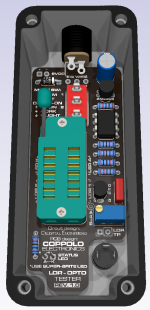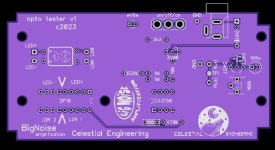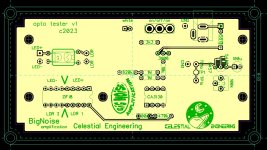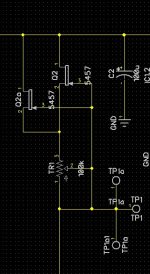Chuck D. Bones
Circuit Wizard
Here is a quick 'n' dirty Opto-Coupler speed tester. It's a relaxation oscillator that uses the LDR's response time to control the oscillator speed. It provides a visual indication of how long it takes for the LDR to get up to 1MΩ after the LED turns off. It can also be used to test LDRs if you cover the LDR & LED1 to keep stray light out. The toggle switch is optional and provides a way to hold the LEDs on or off.
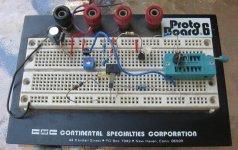
This tester is powered by +18V. U1 senses the voltage across the LDR. When the LDR voltage reaches 10V, U1 turns on Q1 which puts about 2.5mA thru the LEDs. When the LEDs light up, the opto resistance drops quickly and as a result, Q1 turns off. The LDR goes dark, the resistance rises and the cycle repeats. The quicker the resistance rises, the faster LEDs blink. LED1 is the LED inside the opto-coupler, LED2 is a visual indicator. You can vary R6 to adjust the LED current. Q2 is a constant current source that puts 10μA thru the LDR. You can measure the LDR voltage at TP1. Be aware that most DMMs sample the voltage 2 or 3 times per second. Therefore, using a DMM is only practical if you have the toggle switch in either the Center (LDR dark) or Right (LDR lit) position. A fast LDR will blink the LEDs faster than 1Hz. A slow LDR may take several seconds or more to cycle and an LDR with a low dark resistance (<1MΩ) won't cycle at all.


This tester is powered by +18V. U1 senses the voltage across the LDR. When the LDR voltage reaches 10V, U1 turns on Q1 which puts about 2.5mA thru the LEDs. When the LEDs light up, the opto resistance drops quickly and as a result, Q1 turns off. The LDR goes dark, the resistance rises and the cycle repeats. The quicker the resistance rises, the faster LEDs blink. LED1 is the LED inside the opto-coupler, LED2 is a visual indicator. You can vary R6 to adjust the LED current. Q2 is a constant current source that puts 10μA thru the LDR. You can measure the LDR voltage at TP1. Be aware that most DMMs sample the voltage 2 or 3 times per second. Therefore, using a DMM is only practical if you have the toggle switch in either the Center (LDR dark) or Right (LDR lit) position. A fast LDR will blink the LEDs faster than 1Hz. A slow LDR may take several seconds or more to cycle and an LDR with a low dark resistance (<1MΩ) won't cycle at all.

Last edited:



